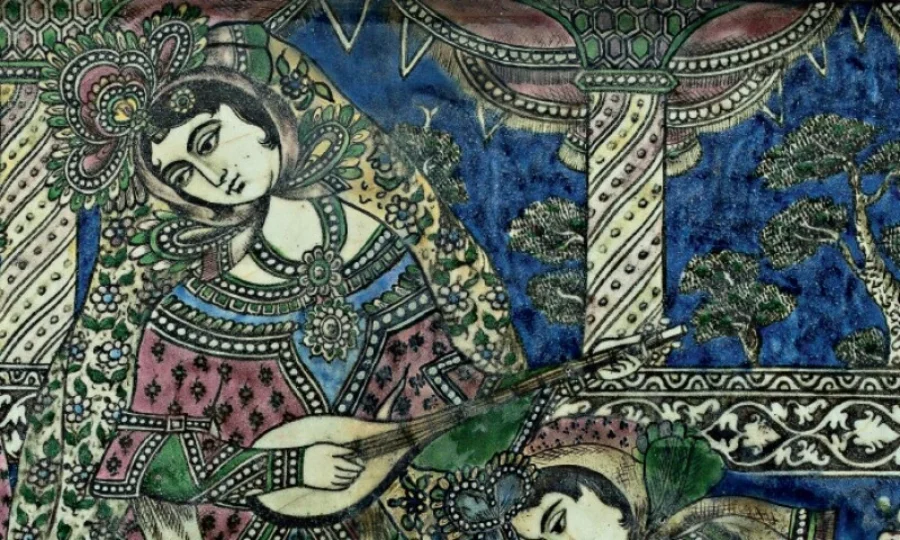In the digital age, a growing number of artists are revisiting time-honored craft techniques and materials, reviving traditional art forms that have stood the test of time. This resurgence is part of a broader movement of craft revival that encompasses practices such as weaving, pottery, glassblowing, woodblock printing, and tapestry knotting. These techniques, passed down through generations, are experiencing a renaissance in today’s artistic landscape.
For many artists, turning to manual, age-old methods in a world dominated by fast-paced technology offers a sense of tangibility and permanence. The tactile nature of handcrafted art provides a stark contrast to the digital realm, imbuing each piece with a unique, one-of-a-kind quality. Furthermore, these traditional methods serve as an important vehicle for preserving cultural heritage, as they are often linked to specific communities or historical periods. By incorporating these practices into contemporary works, artists not only honor their predecessors but also ensure that valuable cultural knowledge is passed down to future generations.
Fusing Traditional Craft with Modern Artistic Expression
The revival of traditional techniques is not simply about nostalgia or repetition. It is about fostering a meaningful dialogue between the past and the present. Many contemporary artists are creatively blending traditional processes with modern aesthetics, creating hybrid works that challenge and expand the boundaries of contemporary art.
One notable example is artist Jeffrey Gibson, who skillfully merges traditional Cherokee and Quechua techniques, such as bead embroidery and quilting, with elements of pop art and political commentary. These hybrid works demonstrate that tradition is not a relic of the past, but rather a living, breathing resource that can contribute to modern discourses.
In painting, artists are reviving classical techniques like oil glazing and hand-mixed pigments to achieve striking aesthetic effects that would be impossible to replicate using modern methods. Meanwhile, in photography, there is a growing trend of reintroducing historical processes such as cyanotype and wet collodion, often within new conceptual frameworks. These retro innovations push the boundaries of artistic expression while maintaining a deep connection to the past.
The Intersection of Technology and Traditional Craft
Far from being a threat to traditional craftsmanship, digital technology is helping to enhance and expand the possibilities of these age-old practices. British painter David Hockney, for instance, embraced the iPad as a creative tool, blending his classical training with the new medium. His iPad drawings prove that modern technology can be integrated seamlessly into an artist's process without sacrificing artistic integrity.
Similarly, many contemporary sculptors are using cutting-edge technologies such as 3D printing and CNC milling to create precise forms, which are then finished by hand and patinated to give them a timeless, organic quality. These hybrid techniques demonstrate how the fusion of technology and traditional craftsmanship can produce works that are both precise and deeply human.
Museums are also playing a vital role in bridging the gap between old and new. Many institutions are now showcasing works by classical artists such as Rembrandt and Vermeer alongside contemporary artists who draw inspiration from their techniques. By juxtaposing historical works with modern creations, these exhibitions highlight the ongoing influence of the past on contemporary art practices.
The Role of Archives and Museums in Revitalizing Tradition
Archives and museums serve as the memory banks of the art world, offering a wealth of knowledge and inspiration for contemporary artists. Many artists research historical archives to uncover forgotten techniques, stories, or ideas, which they then incorporate into their own work. Lebanese artist Walid Raad, for example, created the Atlas Group project, a fictional archive of the Lebanese Civil War that plays with documentary material and artistic fiction.
Museums, too, are evolving their presentation methods to make traditional works more accessible and engaging for modern audiences. Many institutions now incorporate multimedia guides, digital reconstructions, and contemporary commentary into their exhibitions, helping to bridge the gap between historical works and today's viewers. A particularly innovative example of this trend is the Hack the Art History project, in which programmers used augmented reality to offer alternative narratives of classic art catalogs, challenging conventional interpretations of traditional masterpieces.
Tradition and Modernity: A Continuous Flow in Art
There is no opposition between tradition and modernity in the art world; rather, they form a continuous flow. Many of today’s most innovative works are born from an understanding of the past. By reinterpreting ancient techniques and incorporating new technologies to preserve cultural heritage, artists ensure that traditional knowledge not only survives but thrives in the contemporary art scene.
This blending of the old and the new enriches the global art landscape, offering fresh perspectives while honoring the deep roots of artistic tradition. Whether through handcrafts, painting, sculpture, or photography, the fusion of traditional techniques with modern aesthetics offers an exciting avenue for artistic expression, ensuring that cultural heritage continues to evolve in meaningful and transformative ways.
Embrace the Timeless Connection Between Tradition and Modernity
As the art world continues to evolve, there has never been a more exciting time to explore how traditional techniques and modern technologies can coexist and complement each other. If you’re an artist or art enthusiast, consider how you can integrate these age-old methods into your practice or collection. Rediscover the rich history of craft, and be part of the movement that ensures these timeless techniques continue to shape the future of art.










